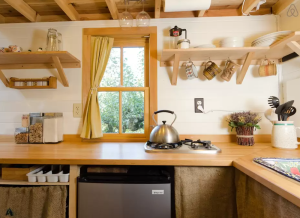In an increasingly urbanized world where space is at a premium, gardeners are looking for innovative solutions to bring nature into their living spaces. A popular solution is vertical gardening. This innovative approach allows those with limited outdoor or even indoor space to enjoy the benefits of gardening while maximizing every inch of available space.
What is Vertical Gardening?
Vertical gardening is a creative gardening technique where plants grow upwards instead of outwards. This is achieved by using walls, trellises, shelves, hanging pots and various other structures to support vertical plant growth. This technique not only saves space, but also creates a visually appealing lush green environment.
Benefits of Vertical Gardening
- Space Optimization: The main benefit of vertical gardening is the ability to make the most of a small space. Whether you have a small balcony, a compact backyard or just an indoor wall, you can turn it into a vibrant garden.
- Enhanced Aesthetics: Vertical gardens add an artistic touch to indoor and outdoor spaces. The arrangement of plants at different heights creates a beautiful visual effect, turning a dull wall into a living work of art.
- Ease of maintenance: Vertical gardens are often easier to maintain than traditional horizontal gardens. They are less susceptible to soil diseases and pests are easier to control thanks to better air circulation.
- Better accessibility: Because plants grow at different heights, caring for them is more ergonomic and you don’t have to bend over or kneel. This convenience is especially beneficial for older gardeners or those with physical limitations.
- Improves Air Quality: Vertical gardens improve air quality by absorbing pollutants and releasing oxygen. They can act as natural air filters, making indoor spaces healthier.
Create your Vertical Garden
- Choose the right plants: Choose plants that are suitable for vertical growth and space conditions. Vine plants such as tomatoes, cucumbers and beans are great choices for outdoor vertical gardens, while indoor options include pothos, spider plants and various herbs.
- Choose a support structure: Choose a suitable support structure based on your available space and aesthetics. This can be a wall mounted planter, trellis, hanging pot or shelving unit.
- Soil and watering: Use a light potting soil for good drainage and aeration. Vertical gardens dry out faster, so constant watering is crucial. A drip irrigation system or self-watering planters can help maintain adequate humidity.
- Regular pruning: To keep your vertical garden healthy and lush, regular pruning is essential. Trim excess growth and remove dead leaves to encourage new growth.
Conclusion
In short, vertical gardening offers individuals a transformative way to connect with nature, even in the smallest of spaces. This innovative approach not only optimizes the use of limited spaces, but also adds aesthetic value and fresh air to indoor and outdoor environments. With the benefits of space efficiency, ease of maintenance, improved air quality and accessibility, vertical gardening opens the door to a world of possibilities for gardening enthusiasts. With careful selection of the right plants, support structures and maintenance practices, anyone can create their own thriving vertical garden. Embracing this garden trend means embracing the beauty of nature while making the most of every nook and cranny, turning even the smallest space into an oasis of vibrant greenery and tranquility.
Frequently Asked Questions
1. What exactly is vertical gardening?
Vertical gardening involves growing plants vertically, using structures such as walls, trellises and hanging pots to maximize space and create lush green areas, even in small spaces.
2. Can vertical gardening be done indoors?
Absolute! Vertical gardening is also suitable for indoor spaces. You can bring a touch of nature into your home with planters, shelves or hanging pots on the wall.
3. What types of plants are suitable for vertical gardening?
Vine plants such as tomatoes, cucumbers, beans and various herbs are great choices for vertical gardens. In addition, decorative plants such as dill and spider plants are perfect for indoor vertical gardens.
4. How do I water my vertical garden?
Vertical gardens dry out faster, so regular watering is crucial. Consider using a drip irrigation system or self-watering planters to maintain consistent humidity levels.
5. Is vertical gardening expensive to maintain?
redundant. Vertical gardens are easier to maintain than traditional gardens. Pruning and pruning may be necessary, but they are simpler tasks that contribute to the overall health of the garden.



